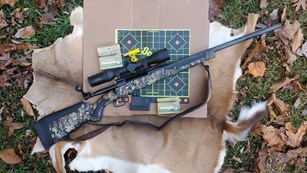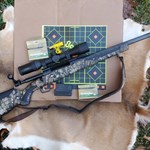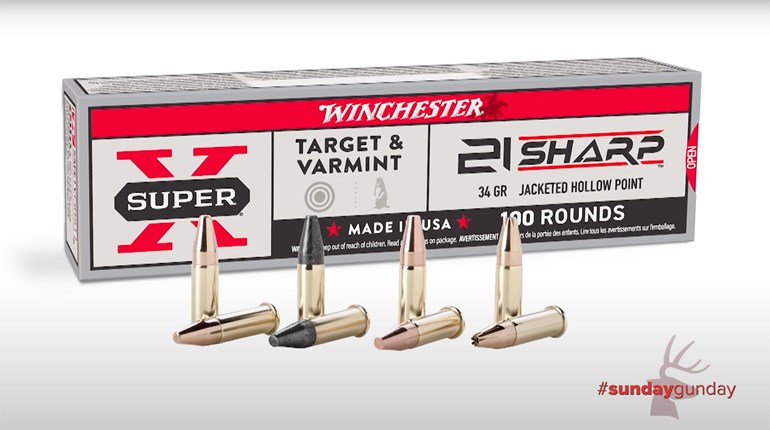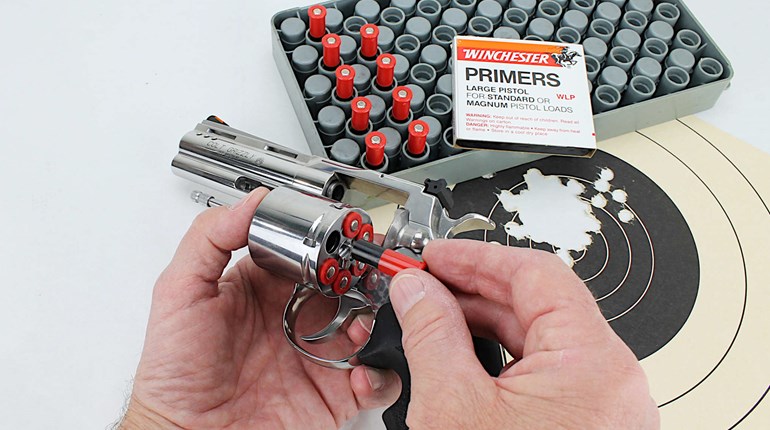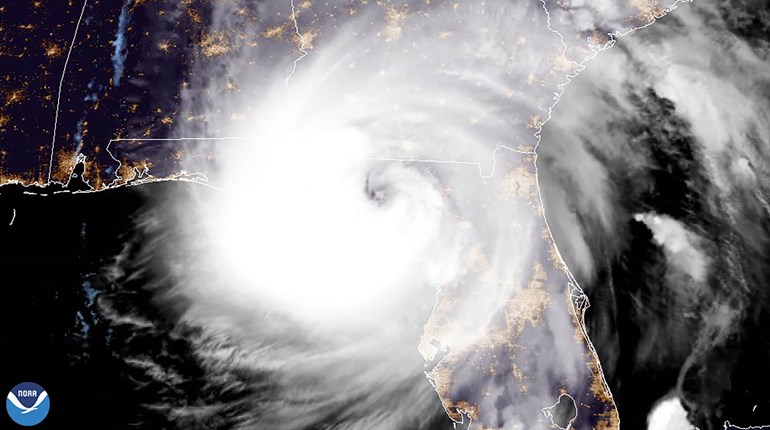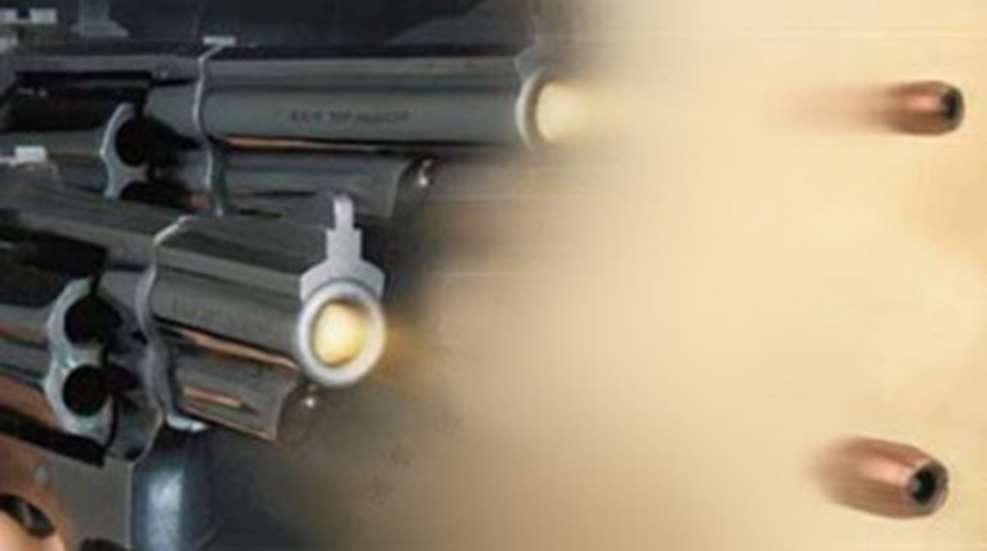
Ballistics is the science that deals with the flight or movement of projectiles. There are four types of ballistics: internal, external, terminal and wound ballistics. Insight into these four areas of mechanical science will help you hit targets and select the best ammunition for your shooting sport or your hunt.
Internal Ballistics
“Internal ballistics” deals with everything that occurs inside the firearm from the moment the primer is set off until the bullet exits the barrel. Expanding gases inside the chamber and barrel of a firearm create pressure. This pressure is influenced by how fast the powder burns and the bullet. Too much or too little pressure could damage you and/or your gun.
We generally don't have to worry too much about internal ballistics because ammunition companies do that for us. You still must use the correct ammunition for your firearm and follow standard guidelines if you load your own ammo. You also need to know ammunition marked with a “+P” means it is loaded to a higher pressure. +P ammunition is only safe in modern firearms. If you have ammunition questions, contact the manufacturer or get your gun checked by a good gunsmith.
Ammunition that's giving too much pressure will give you signs: It can be a bolt that is hard to open; it can be an empty case that is hard to extract; it could also be a locked action or a jam in a semi-auto firearm. Sometimes you might even see a split case. If you experience anything like this, stop shooting immediately and have the firearm checked out.
Internal ballistics also governs the speed at which a bullet will exit a barrel and how fast shot leaves a shotgun. The rate of the rifling twist in a barrel must match the velocity and bullet size in order for a bullet to fly straight. With a shotgun, the choke controls how tight a pattern it will throw. In all cases, internal ballistics influence external ballistics.
External Ballistics
External ballistics deals with the bullet's flight to the target. Velocity, bullet shape, gravity, wind, barometric pressure, elevation and even humidity influence a bullet's flight. Some have tremendous influence and others very little. The best way to gain an understanding of external ballistics is to play with a computer ballistics program.
Some programs like Nikon's SPOTON are available on the Internet. Others, like the Sierra Infinity program, come on a CD and you install the program on your computer. With either, you can pick a particular load and change things like sight-in distance, wind, elevation and so on and watch how these affect the path of the bullet.
For example, I plugged a .223 Remington factory load into the Sierra Infinity program with a certain set of conditions. Then I changed the sight-in distance from 100 yards to 200 yards. I also changed the wind speed from zero to 10 mph. The 10 mph crosswind shoved this bullet almost a foot to the side at 300 yards. If you were shooting at a prairie dog at that range you would miss the target completely-that is, unless you made a correction for the crosswind.
The distance you sight your rifle in at is important too. I used the same load in the previous example and changed the zero distance from 100 to 200 yards. This altered point of impact at 300 yards by almost four inches. The 100-yard point of impact changed too.
Even some experienced shooters don't know that the height your scope is above the center of your barrel influences the bullet's path. If you use mounts that place the scope half an inch closer to the barrel, this same load will fall an additional inch below your line-of-sight at 300 yards
Using ballistic computer programs and charts can help you better understand external ballistics. However, the calculations for these programs and charts are velocity dependant. They were established using velocities obtained with a test barrel. Neither of these will tell you the velocity of a certain load from your barrel. For that, you need a chronograph.
Using a chronograph, I tested the Remington factory ammunition used in the examples above. I used a Remington R15 semi-automatic rifle with an 18-inch barrel. Because the barrel was shorter than the factory 24-inch test barrel, and because a semi-automatic rifle diverts some of the gas generated by the burning powder to cycle the action, velocity was slower than advertised. Most semi-automatic rifles lose about 150 feet per second (fps) compared to a bolt action. You will also lose about 25 fps per inch of barrel. So, the factory load was 230 fps slower from the R15 than the velocity listed in the catalog. This altered the 300 yard point of impact by 2.5 inches.
You can use charts and computer programs to make a good guess at external ballistics. The only way to know exactly how a certain load will perform is to shoot it from your rifle.
Terminal and Wound Ballistics
Terminal ballistics is the study of how a bullet reacts to impact. Does it change shape, break apart or retain all of its weight? Wound ballistics is the science of how terminal ballistics damage living tissue. In other words: Wound ballistics deals with how wide and deep of a hole a certain bullet, impacting at a certain speed, makes. Neither is important to target shooters. Both are very important to hunters.
Both terminal and wound ballistics are dependant on velocity; specifically the velocity at which the bullet impacts the animal. Both are also influenced by the way a bullet is designed, what it is made of and what it hits or passes through. Ethical hunters try to select bullets that will ensure they can deliver a quick and humane kill.
It's important for hunters to understand all bullets are not created equal. Bullets that work great on coyotes and rock chucks may fail miserably on deer or a pronghorn. The problem is, short of testing these bullets in some sort of ballistics medium, you have to take the advice of experienced hunters or the manufacturers. Maybe the best approach is to do both.
We can use the 55-grain (gr.) Remington AccuTip load for the .223 Remington we have previously referenced to further illustrate this point. This bullet penetrates about 8 to 10 inches into ordnance gelatin at 50 yards. It will almost completely disintegrate. This is a varmint bullet and that's how it is supposed to act.
By comparison, the 62-gr. Federal Fusion load for the .223 Remington is not going as fast because it is heavier. But this is a bonded bullet that will expand into a mushroom shape and retain most of its weight. Because of this, it penetrates twice as deep as the varmint bullet.
If you were hunting bobcats or groundhogs, the 55-gr. AccuTip bullet would be the best choice. This is because of the massive tissue destruction it will cause at a shallow depth. If you are hunting deer, the 62-gr. Fusion load is much better because it will penetrate deeper and be able to break bones if necessary. I've used both as suggested and they work very well.
You can't just look at a bullet and predict its terminal or wound ballistics. Ballistic programs and charts won't tell you this either. However, companies like Federal and Winchester have online programs that will help you select the proper bullet for the animal and conditions in which you hunt.
The Federal program is very interactive and, based on my experience, very accurate. You select your cartridge, the range you intend to shoot and the animal you intend to hunt. Then, the program will show all appropriate loads. If no load comes up it means Federal does not recommend using that cartridge at that range for that animal. You can also use the Federal program to help you select a cartridge. Let's say you're looking to buy a new deer rifle and are not sure what cartridge to select. Go to the Federal website and use the program. Select deer and the range you might expect to shoot where you hunt. The program will list all the loads for all appropriate cartridges. Winchester's website basically gives you the same information. The good thing about both of these online programs is that the terminal and wound ballistics of each load have been taken into consideration.
Hornady's website has a similar program called the HITS calculator. It suggests the size of animal you should shoot with a particular load based on the caliber, bullet weight and velocity. It does not take into account terminal or wound ballistics. However, if you compare the HITS number with the detailed information of a specific Hornady bullet, you can get a good idea about load selection.
We do a lot of talking about the fundamentals of shooting, sight alignment, internal support and other things you do as a shooter to improve accuracy. However, as you can see, that's just part of it. The internal ballistics of your ammunition must match your firearm and you must understand external ballistics to get hits at longer ranges. Hunters must choose ammunition which will provide the terminal and wound ballistics appropriate for the animals they hunt in order to make clean kills. Understanding ballistics is all part of becoming a good shot and an ethical hunter.
Know the Lingo
Grain: A unit of weight. There are 7,000 grains to a pound.
Bonded: This is a bullet that has had its core bonded to the jacket. It ensures a controlled expansion that is desirable on big-game animals.
Chronograph: An instrument that measures elapsed time. Combined with distance, you can use it to determine projectile velocity.







